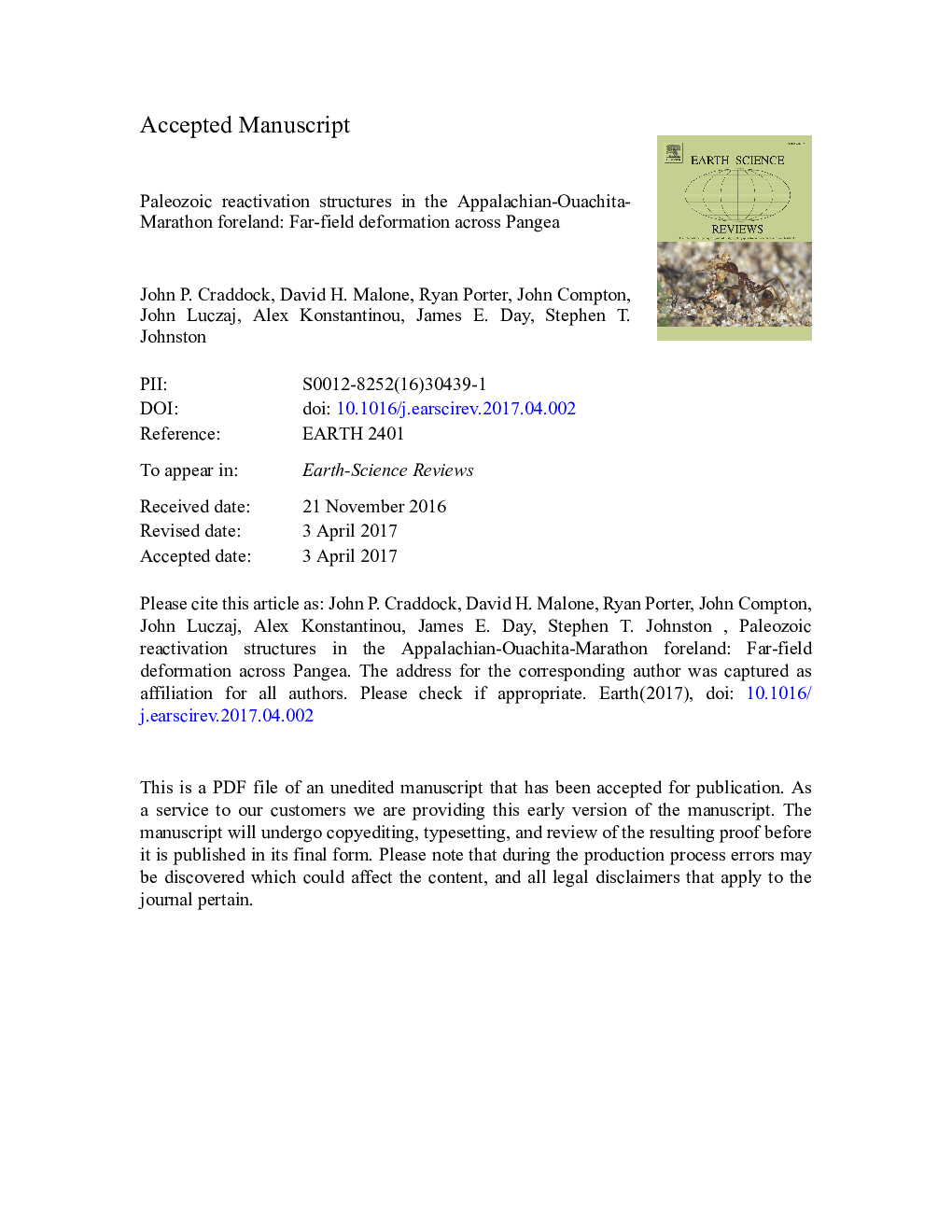| Article ID | Journal | Published Year | Pages | File Type |
|---|---|---|---|---|
| 5785122 | Earth-Science Reviews | 2017 | 93 Pages |
Abstract
The Proterozoic Grenville orogeny (~Â 1300-980Â Ma) reactivated the Archean-hosted Kapuskasing suture in Laurentia which then propagated west and south initiating the Keweenaw rift (1141-1085Â Ma) which closed by thrust shortening at 1060Â Ma. Late Proterozoic-Paleozoic sediments were then deformed in association with the amalgamation of Pangea in the late Paleozoic causing ~Â 30Â km of thrust shortening along this 4000Â km paired (inverted) fault system, preserved by numerous 2nd and 3rd order footwall structures in adjacent basement and Paleozoic cover rocks. We present the descriptions of twenty field sites of deformed Paleozoic sediments in the Appalachian-Ouachita-Marathon foreland to further document the subtleties of far-field tectonic stress transmission in the midcontinent of North America. Field observations are also complimented with 63 new foreland calcite twinning strain results and, when compiled with 260 older twinning strain results, document a complex Paleozoic far-field stress-strain field. Appalachian-Ouachita-Marathon orogenic fluid pulses in the foreland were also complex, namely the so-called Mississippi Valley type (MVT) Pb-Zn ore deposits, and mineralization is constrained by thrust faulted highlands with occasional fluid sourcing from underlying Precambrian basement. The amalgamation of Pangea was a complex process in the late Paleozoic involving oblique convergence along the Gondwana margin and a central Laurussian collisional belt where far-field stresses initiated inversion structures in the centers of the African and N. American cratons, including the Kiri and Keweenaw-Kapuskasing uplifts, respectively.
Related Topics
Physical Sciences and Engineering
Earth and Planetary Sciences
Geology
Authors
John P. Craddock, David H. Malone, Ryan Porter, John Compton, John Luczaj, Alex Konstantinou, James E. Day, Stephen T. Johnston,
